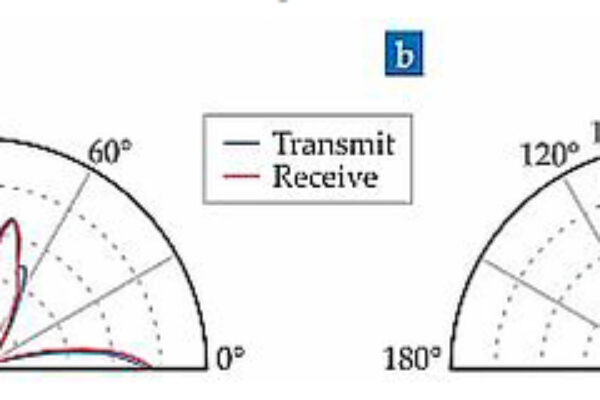
Symmetry-breaking antenna opens up design options
One of the first lessons we learn about antennas is that they have reciprocity, meaning that their “transmit” field-radiation pattern is identical to their “receive” pattern. In most situations, this symmetry is a good thing, such as when a handset is linked to a base station, since you want the patterns and paths to be the same in both transmit and receive modes. Still, there are times when it might be nice to have different patterns for the two modes, as way of minimizing interference, masking an antenna’s location, or implementing a clever mesh-network topology.
But the reciprocity situation may have a new development that is intriguing.
While not the first non-reciprocal RF device, a team at the University of Texas at Austin has developed what appears to be a more practical antenna which implements non-symmetry, Figure 1. I won’t summarize what they did and how they did it, as you can read your choice of the dense, hard-to-follow, jargon-laden academic abstract from the Proceedings of the National Academy of Sciences, “Breaking temporal symmetries for emission and absorption,” the well-written university press release “UT Austin Engineers Design Next-Generation Non-Reciprocal Antenna,” or the longer but very readable and clear article in Physics Today, “A nonreciprocal antenna speaks without listening” (the latter is well worth the few extra minutes).

The normalized transmission and reception patterns, as a function of direction, for (a) the unmodulated antenna and (b) the antenna with the 600-MHz modulation. Source: Physics Today.
Assuming what these researchers have done is viable (I am in no position to judge it), I was trying to think how that would affect design fundamentals and underlying assumptions. The reality is that every design begins with a set of assumptions – whether consciously articulated or not – that are then “built in” to the resultant topology as well as subsequent design decisions and tradeoffs.
When those fundamentals change, so do the design options, for better and worse. In cases such as that of the non-reciprocal antenna, it’s a positive change, as you can choose not to use it. Of course there are other fundamentals which change but don’t give you any options. A mundane example is the availability of a component you have used in the past and that you assumed you could use again, only to find out it is no longer available due to obsolescence, price, or vendor disqualification.
A more dramatic example was Einstein’s development of the principles of relativity, which showed that space is curved by gravity and that time slows down as speed increases, thus shattering the baseline assumptions that space and time are fixed. While these relativistic effects may seem to be irrelevant in daily life, the GPS we routinely depend on would be quite inaccurate and almost useless without taking it into account.
Have you ever had a fundamental assumption – either minor or major – change on you in a way that affected your design approach? Have you been involved in a radical shift from “sorry, it can’t be done” to “we can now do that”?
Bill Schweber, is an electronics engineer and author who has written for EE Times, was analog editor at EDN and prior to that worked in marketing communications for Analog Design and was also editor of its technical journal.
This article first appeared on EE Times’ Planet Analog website.
Related links and articles:
Antenna diversity: blessing or curse?
Antenna challenges in smartphones and tablets with 4G rising
Analog optical fiber forges RF link
Keep it simple: beware of feature creep
 If you enjoyed this article, you will like the following ones: don't miss them by subscribing to :
eeNews on Google News
If you enjoyed this article, you will like the following ones: don't miss them by subscribing to :
eeNews on Google News




